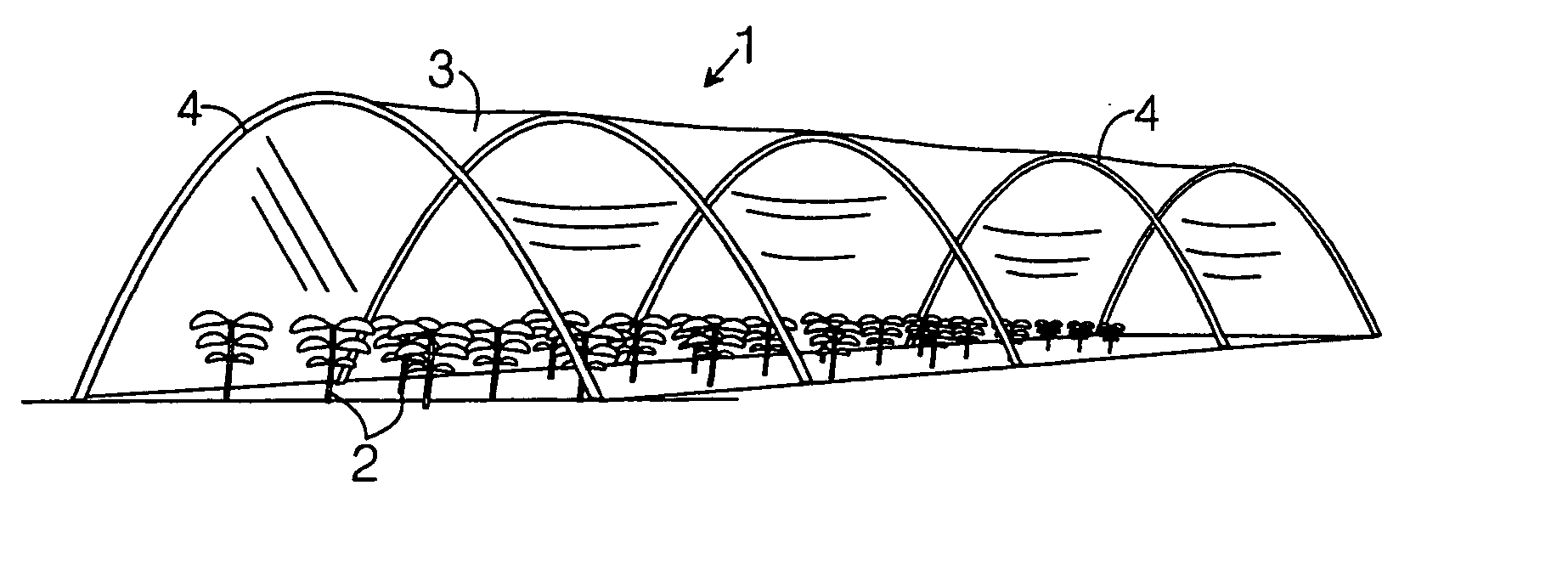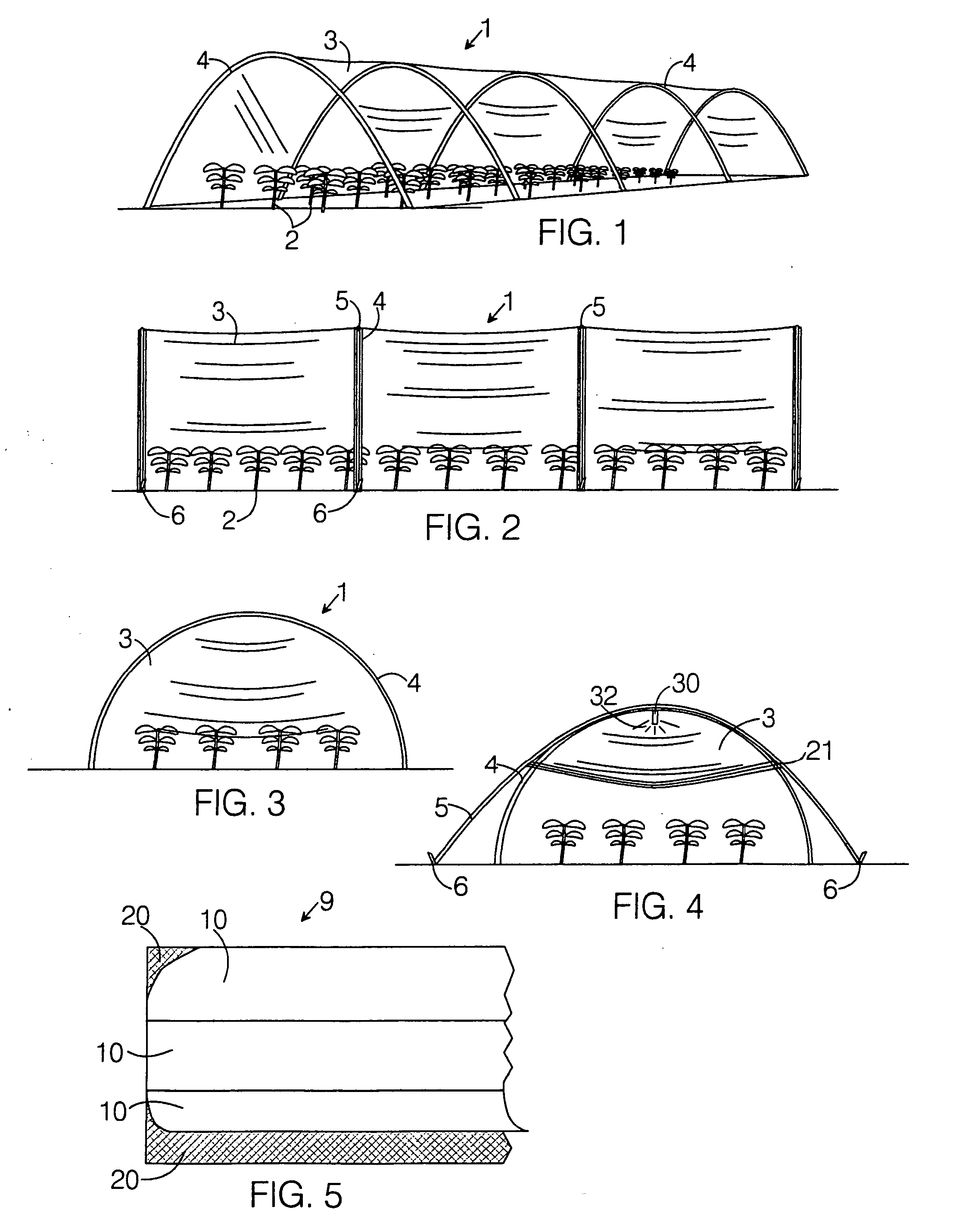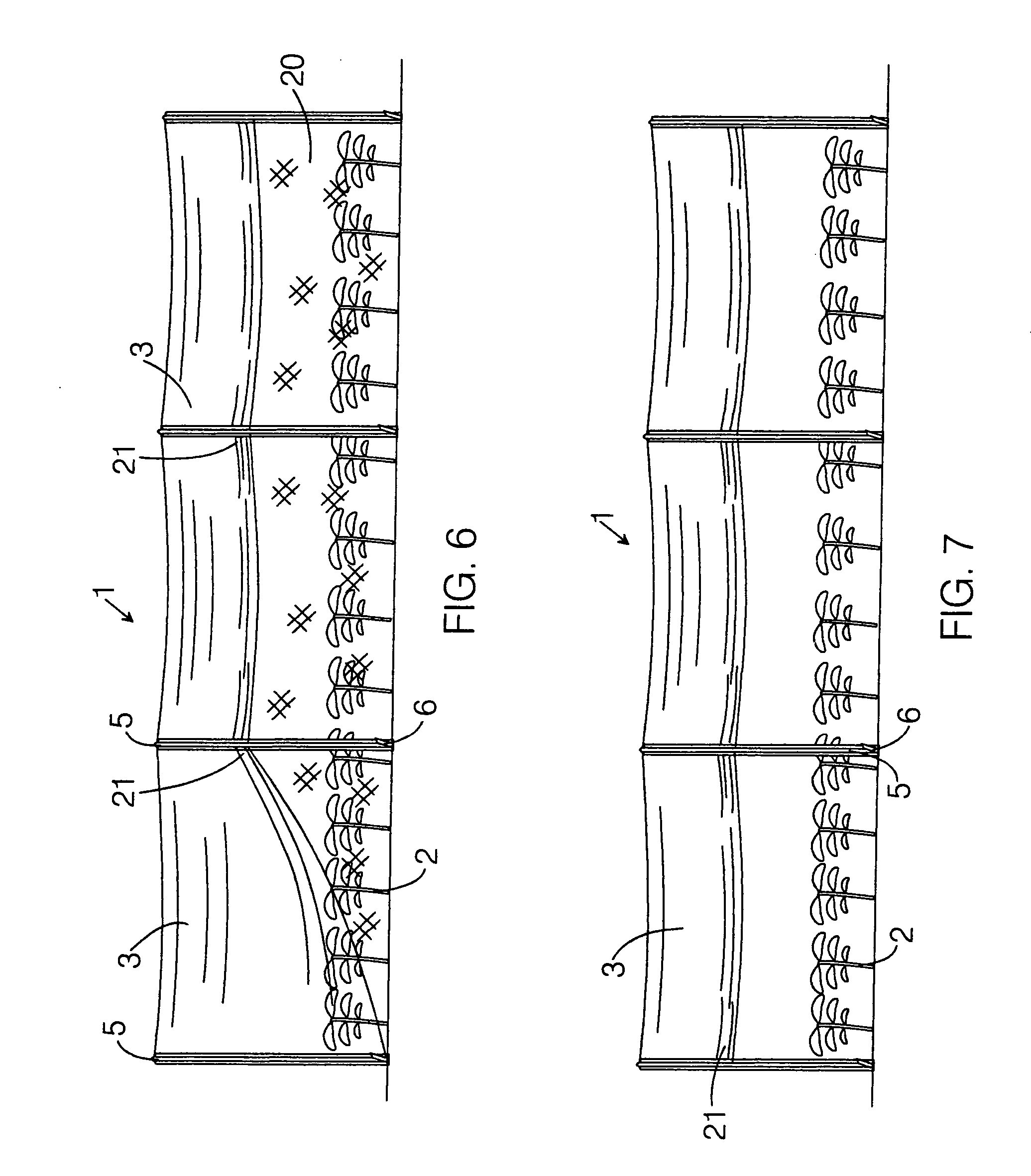Plant protection device and method
a plant protection and plant technology, applied in the field of plants, can solve the problems of limiting its effectiveness, inability to protect plants, inconvenient for small-scale growers, and inability to meet the needs of small-scale growers,
- Summary
- Abstract
- Description
- Claims
- Application Information
AI Technical Summary
Benefits of technology
Problems solved by technology
Method used
Image
Examples
Embodiment Construction
[0024] All of the key elements of the basic invention are shown in FIG. 1, which depicts the protective enclosure 1 deployed over and along several rows of garden plants 2. The protective enclosure 1 consists in major part of a translucent plastic cover 3 draped over a plurality of arch supports 4. As shown, at each of the supports 4, the cover 3 is pressed down onto the support by a hold-down 5, which in the Preferred Embodiment is a bungee cord. With continuing reference to FIG. 1, it can be seen that the hold-down 5 is affixed to the ground by a hold-down stake 6, which in the Preferred Embodiment is simply a miniature tent stake.
[0025] The compound cover 9 of the Preferred Embodiment is shown in FIG. 5. It consists of a base layer 10, which is a plastic sheet that is impervious to wind and rain. The base layer 10 defines the area and limits of the compound cover 9. Two additional panels, the ventilation panels 20, are sewn onto the side of the base layer 10 that is intended to f...
PUM
 Login to View More
Login to View More Abstract
Description
Claims
Application Information
 Login to View More
Login to View More - R&D
- Intellectual Property
- Life Sciences
- Materials
- Tech Scout
- Unparalleled Data Quality
- Higher Quality Content
- 60% Fewer Hallucinations
Browse by: Latest US Patents, China's latest patents, Technical Efficacy Thesaurus, Application Domain, Technology Topic, Popular Technical Reports.
© 2025 PatSnap. All rights reserved.Legal|Privacy policy|Modern Slavery Act Transparency Statement|Sitemap|About US| Contact US: help@patsnap.com



